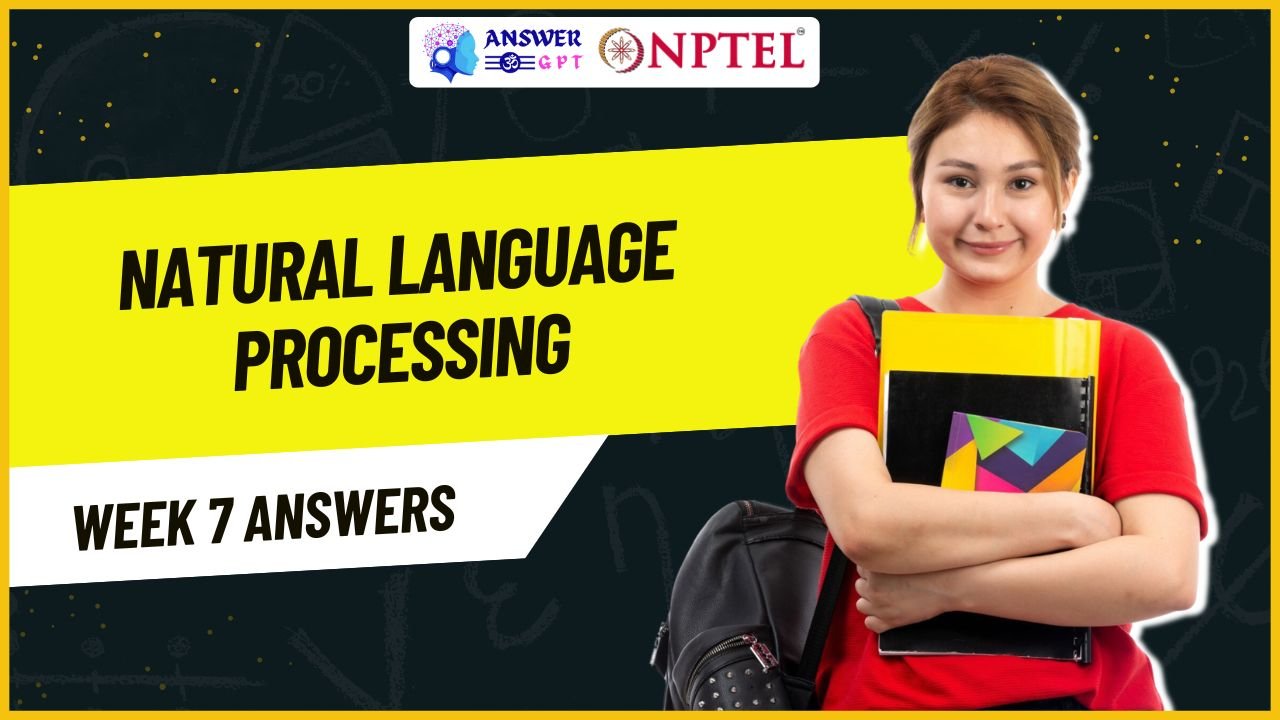Introduction To Internet Of Things Week 7 NPTEL Assignment Answer 2025
NPTEL Introduction To Internet Of Things Week 7 Assignment Answer 2024
Q1. DHT Sensor refers to Digital Humidity and Temperature Sensor.
a. True
b. False
Answer: a
Explanation: DHT sensors are used to measure temperature and humidity digitally.
Q2. Fill in the blanks. _____________is a python library used for plotting the data in 2D.
a. List
b. Numpy
c. Pandas
d. Matplotlib
Answer: d
Explanation: Matplotlib is a Python library specifically used for 2D data visualization and plotting.
Q3. Fill in the blanks. _________ makes a scatter plot of the given points.
a. ion()
b. figure()
c. Scatter()
d. None of these
Answer: c
Explanation: scatter() is the correct function to make scatter plots in Python using matplotlib.
Q4. What are the two main challenges of SDN?
a. File placement and Node placement
b. Rule placement and Controller placement
c. All of these
d. None of these
Answer: b
Explanation: The challenges in SDN mainly involve optimizing rule placement in switches and controller placement for efficient performance.
Q5. In soft-timeout, all the rules are deleted from the switch.
a. True
b. False
Answer: b
Explanation: In soft-timeout, rules are deleted only if they are not used within a certain time, not all are deleted unconditionally.
Q6. Which of the following is a component of SDN?
a. Hardware switches
b. Flow-rules
c. None of these
d. All of these
Answer: d
Explanation: SDN architecture includes hardware switches and flow rules managed by the controller.
Q7. What is introduced if a controller is down in SDN?
a. Back up controller
b. Intro controller
c. All of these
d. None of these
Answer: a
Explanation: A backup controller is used for redundancy in SDN to handle failure of the main controller.
Q8. Southbound API is used to communicate between control layer and application layer.
a. True
b. False
Answer: b
Explanation: Southbound APIs connect the control layer with the infrastructure layer (switches), not with the application layer.
Q9. SDN is OpenFlow.
a. True
b. False
Answer: b
Explanation: OpenFlow is a protocol used within SDN, but SDN is a broader concept than just OpenFlow.
Q10. Which of the following forwards the sensed data based on the ID of the source node?
a. Value-centric data forwarding
b. ID-centric data forwarding
c. All of these
d. None of these
Answer: b
Explanation: ID-centric data forwarding routes data based on the identity of the source node.
Q11. Does integrating SDN in IoT provide intelligent routing decisions?
a. Yes
b. No
Answer: a
Explanation: SDN in IoT enables dynamic and intelligent routing based on network conditions and data needs.
Q12. Are Indigo and LINC Open source?
a. Yes
b. No
Answer: a
Explanation: Both Indigo and LINC are open-source SDN controllers used in research and development.
Q13. Which of the following is used to communicate among multiple controllers in the control layer?
a. East-Westbound APIs
b. Northbound APIs
c. All of these
d. None of these
Answer: a
Explanation: East-Westbound APIs handle communication between multiple SDN controllers for coordination.
Q14. How many requests can a controller handle through a single thread?
a. 200/sec
b. 50/sec
c. None of these
d. All of these
Answer: a
Explanation: On average, a controller can process around 200 requests per second using a single thread.
Q15. Size of the ternary content-addressable memory is not limited at the switches.
a. True
b. False
Answer: b
Explanation: TCAM (Ternary Content-Addressable Memory) size is limited in hardware switches, which can limit rule scalability.

![[Week 1-12] NPTEL Introduction To Internet Of Things Assignment Answers 2025](https://answergpt.in/wp-content/uploads/2025/01/Introduction-To-Internet-Of-Things-2025.jpg)

![[Week 1-12] NPTEL Introduction To Internet Of Things Assignment Answers 2024](https://answergpt.in/wp-content/uploads/2024/01/Introduction-To-Internet-Of-Things-scaled.jpg)


